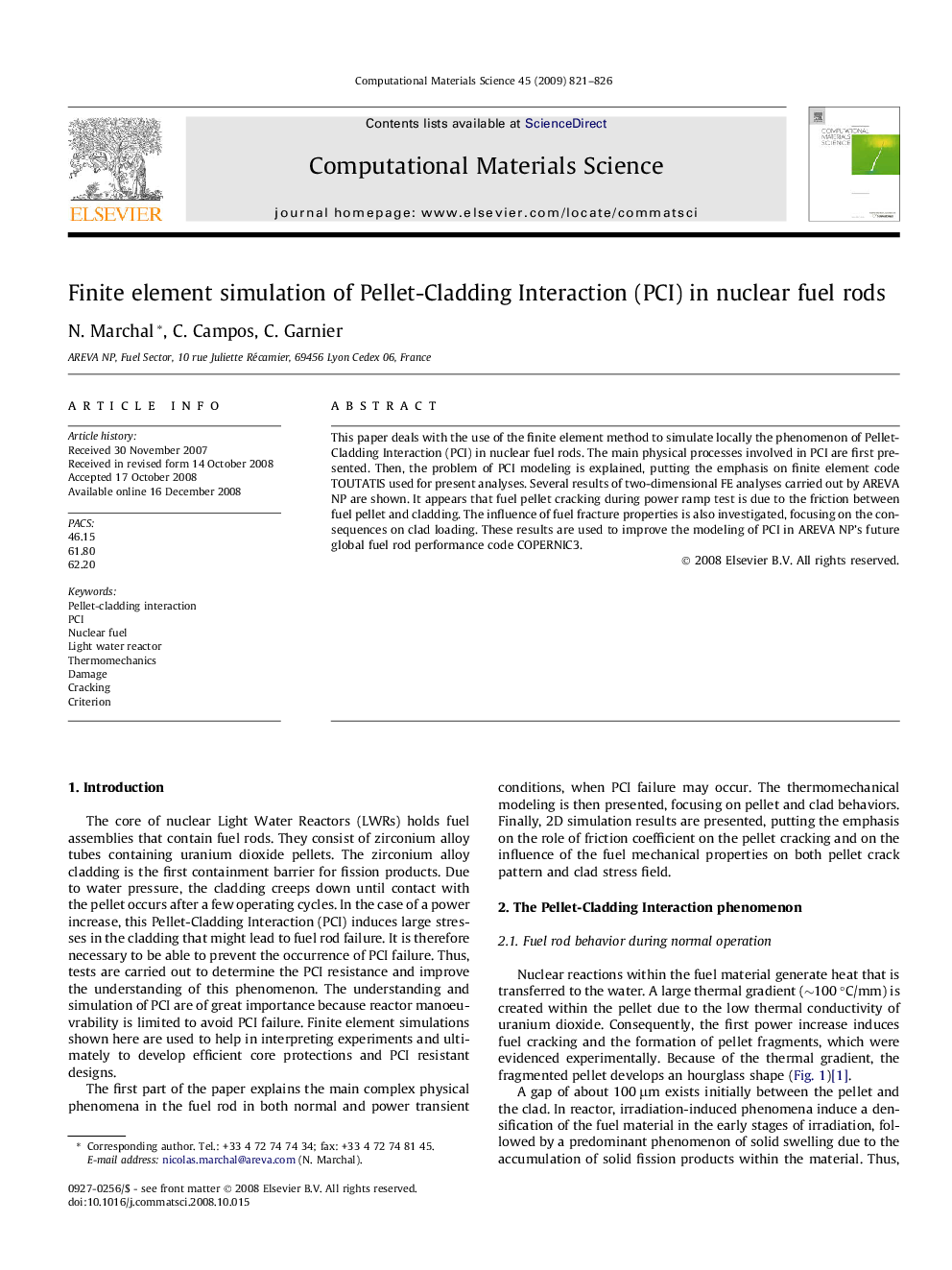| Article ID | Journal | Published Year | Pages | File Type |
|---|---|---|---|---|
| 1563659 | Computational Materials Science | 2009 | 6 Pages |
Abstract
This paper deals with the use of the finite element method to simulate locally the phenomenon of Pellet-Cladding Interaction (PCI) in nuclear fuel rods. The main physical processes involved in PCI are first presented. Then, the problem of PCI modeling is explained, putting the emphasis on finite element code TOUTATIS used for present analyses. Several results of two-dimensional FE analyses carried out by AREVA NP are shown. It appears that fuel pellet cracking during power ramp test is due to the friction between fuel pellet and cladding. The influence of fuel fracture properties is also investigated, focusing on the consequences on clad loading. These results are used to improve the modeling of PCI in AREVA NP's future global fuel rod performance code COPERNIC3.
Related Topics
Physical Sciences and Engineering
Engineering
Computational Mechanics
Authors
N. Marchal, C. Campos, C. Garnier,
